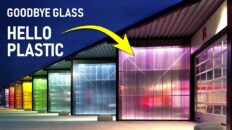With rising sea levels, extreme weather events, and the threat of coastal flooding, our cities face unprecedented challenges. But what if we could reimagine urban living to not only coexist with water but thrive upon it?
Introduction
Rising sea levels are a reality that coastal cities around the world need to prepare for. Flooding is destroying billions of dollars worth of infrastructure and forcing millions to leave their homes. One of these is South Korea’s largest port city, Busan. With a population of over 3.4 million people, Busan is an important economic, cultural and educational center. Their sea level has risen more than 20 cm or 7 inches since 1880. In a bold and progressive move, Busan has teamed up with Bjarke Ingels Group, an architecture and design firm.
Together they have proposed building the world’s first resilient and sustainable floating community. Oceanix is a completely modular and scalable city designed to grow, transform and adapt organically over time. The city will initially consist of three floating platforms connected to each other and to land by bridges.
Biorock/Seacrete
The platforms will be coated with Biorock or Seacrete, a buoyant material that is around three times stronger than Ordinary Portland cement and concrete. To make biorock, steel rebar cages are placed in seawater which is rich in minerals. When a small electric current is passed through the metal, they turn into negative cathodes and positive anodes.
Water or H2O breaks down into H2 and O2. Oxygen bubbles form at the anode and rise out of the water while hydrogen bubbles form at the cathode. Due to the polarity of this reaction, negatively charged anions like chlorine and hydroxyl move to the positive anode. Positively charged cations like sodium, calcium and magnesium move to the negative cathode. These start to accumulate on the metal rebar coating it with a thick layer of magnesium oxychloride cement.
Oceanix Features
- Initially, it is going to be made up of three platforms spread out across 15 acres. Each platform or neighborhood will be solar powered and serve a specific purpose. One for living, another for lodging and the third for research.
- Each hexagonal island is around two hectares or 3.5 football fields. Floating neighborhoods will accommodate 300 people.
- Mixed-use buildings made of light-weight timber and bamboo that are all under seven stories in height to resist the wind.
Oceanix Systems
- The Oceanix project will be self-sustaining. It centers around six central principles: net-zero energy, fresh water autonomy, plant-based food, zero waste systems, shared mobility and habitat regeneration.
- The zero waste system will consist of a compost garden, anaerobic digester, algae filtration and an exchange hub.
- The energy system will consist of solar panels, wind turbines, algae bioreactor, and compressed air storage.
- The food needed will be grown on outdoor farms, aeroponics and ocean farms.
- Finally, the water system will consist of rainwater collection, dehumidifiers, wastewater and greywater treatment facilities and water storage.
Conclusion
Floating cities won’t save us from climate change. Utopian visions like Oceanix that will hold a fraction of the city’s displaced population are usually just an expensive and unrealistic dream. I think the better approach would be to extract realistic ideas from projects like these and implement them in every community around the world. Water collection systems, compost gardens, greywater reuse, robust public transportation, etc can change our cities for the better and they’d be far less expensive than floating communities.





